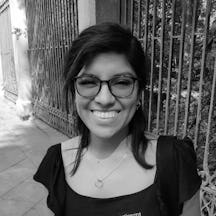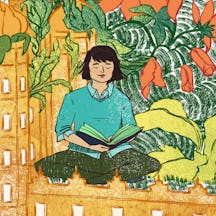Many people probably regard potatoes as a traditional part of British and European cuisine. But the few species of potato sold in most supermarkets are tiny handful of the thousands of varieties available, of many colours and different tastes. Nataly Allasi Canales imagines an everyday white potato dreaming of its colourful cousins in the Americas, and reveals why discovering plants’ genetic origins is so important for our future.
Unravelling genetic origins from the potato to cinchona
Words by Nataly Allasi Canalesartwork by Cat O’Neilaverage reading time 6 minutes
- Serial
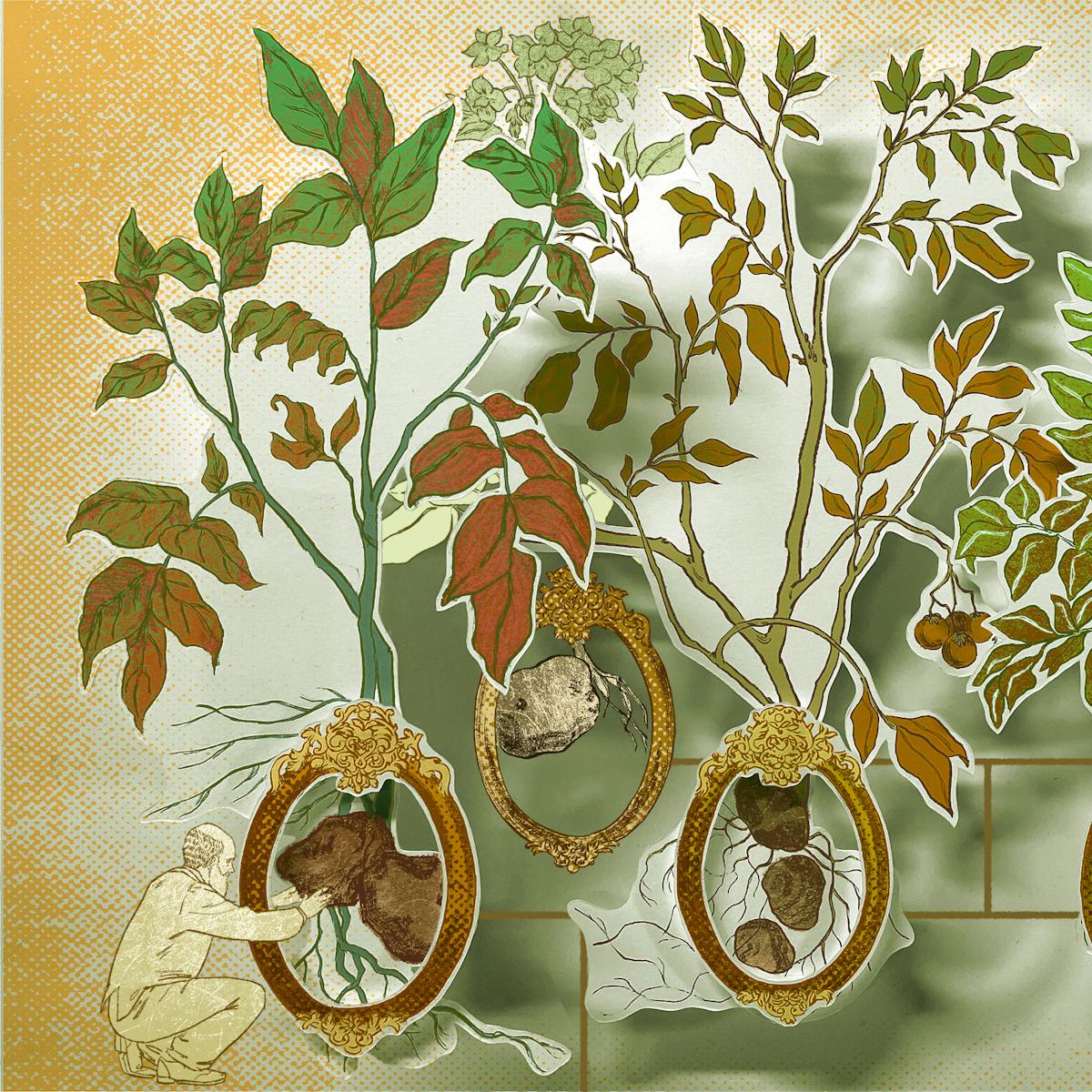
Call me papa, potato, картофель, 土豆 or Solanum tuberosum.
I feed the world and the world loves me, making this tuber happy. I’ve been here in my home since I was able to remember, a tiny seed potato.
I like it here. Europe is comfy and its people take care of us, but when I glance around, everyone looks just like my clone. I thought this was normal, but I’ve since dreamed of a different place where there’s so much life and diversity and every colour is radiant.
I saw what I would call cousins – they came in different shapes and colours. I would never have guessed that these different forms of me could visit me in my dreams! Why is that one purple? Some even have rings of different colours inside them. How did they get them?
Are they more liked than us, the plain ones? Is this the future or past I’m seeing? Are we all heading there, or this is where we all come from? I shouldn’t worry too much – after all, today is my pick-up day and they’ll be taking me, just like they did with the elders. Nobody knows where that is. Perhaps it’s time to visit that dreamy land…
Just as this European potato doesn’t know its origin and relatives, the genetic origin of many organisms is still unknown. Although from the latest genetic studies, we do know that potatoes are originally from Southern Peru and were domesticated by Indigenous Andeans around 7,000 to 10,000 years ago. Only in the Andes can you find more than 4,000 native types of potatoes, with different shapes, colours and tastes.
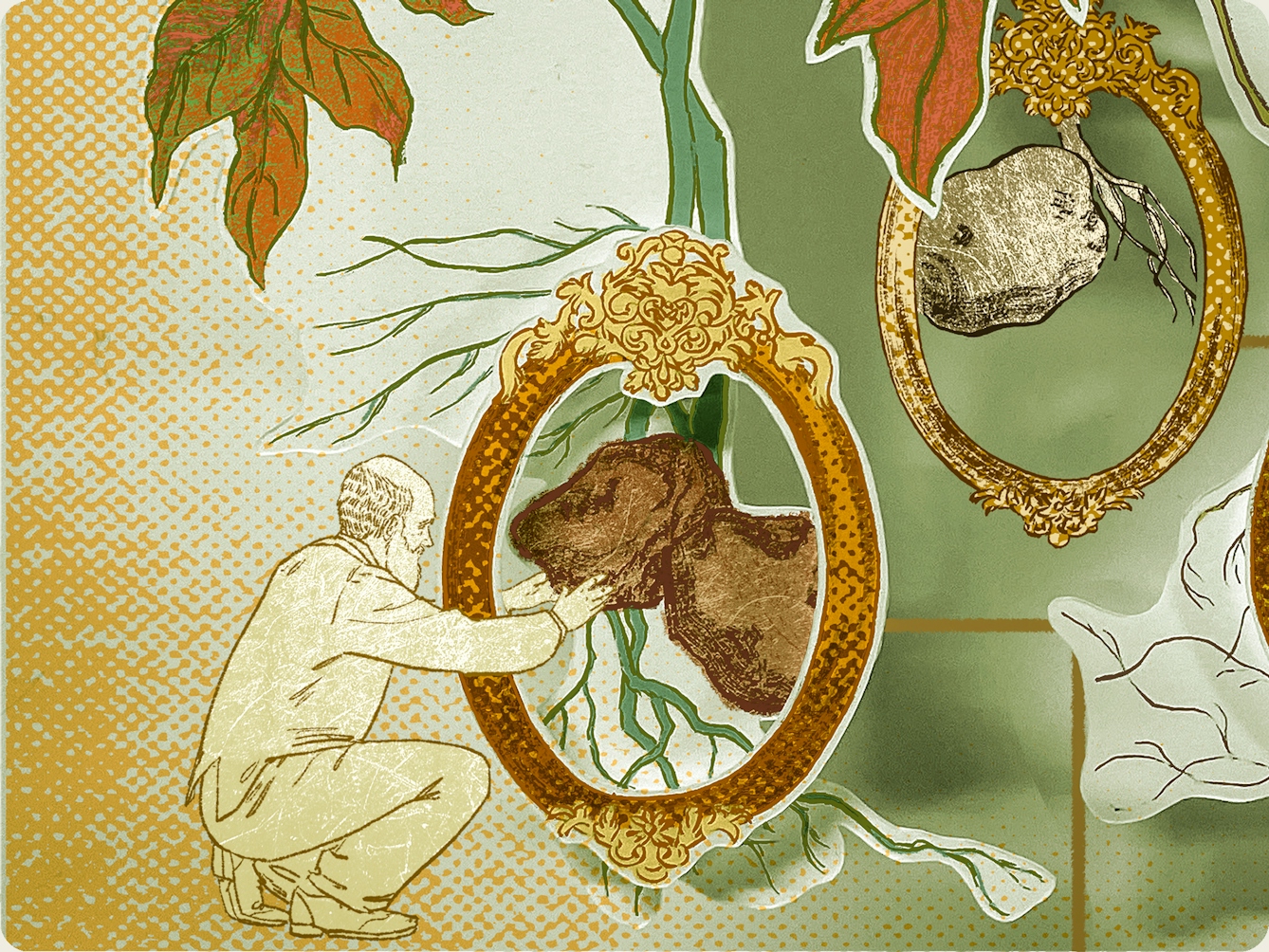
“This European potato doesn’t know its origin and relatives, just as the genetic origin of many organisms is still unknown.”
Charles Darwin and the origin of potatoes
Today the potato is one of the most-consumed crops in the world. But which of the many potatoes was introduced to Europe? Traditionally, the historical introduction of organisms from one place to another is unravelled by archival research, literature and taxonomic studies.
But now, thanks to the power of current genomic technologies, life scientists like me are able to unravel the genetic origins of life forms. During recent decades these technologies have enabled the inclusion of historical and ancient samples; the discipline that studies them is called palaeogenomics.
Now, thanks to the power of current genomic technologies, life scientists like me are able to unravel the genetic origins of life forms.
However, there are special considerations and challenges at different stages while working with these old collections and archaeological remains: ethical attention during the study design, special permissions from the museum staff before sampling, the limited amount that can be sampled, custom-made and longer laboratory protocols, and computational analyses.
These challenges and extra steps involve more resources, different skills, a leap of faith, and an unbreakable spirit.

“During recent decades, genomic technologies have enabled the inclusion of historical and ancient samples; the discipline that studies them is called palaeogenomics.”
Fortunately, there are people interested in these challenging projects. For example, Rafal Gutaker is an evolutionary biologist who discovered that the genetic origin of modern European potatoes could be traced back to a mix of Chilean and Andean historical specimens, which were later bred with wild relatives.
One of these historical specimens was a potato plant collected by Charles Darwin on Chiloé Island during his first voyage aboard The Beagle. Not only that, there was also a reintroduction of European potatoes to Chile in the 19th century!
I was very fortunate to work with Rafal, so I could ask him how important it is to have access to historical samples to discover how life evolves and diversifies. He says, “Without the original material that was yet unaffected by genetic backflow from modern European cultivars, we wouldn’t be able to tell the complete story of European potato origins.”
And what about when there are only a few samples in the whole study – could it be reliable? He told me, “Even using one single sample can change the whole understanding of the evolutionary history of species, as was the case of the discovery of a new hominid species, the Denisovan.”
Working as a plant detective
These studies can also rewrite history. For example, the late blight disease that affects potato crops is caused by the pathogenic bacteria Phytophthora infestans. This pathogen led to the Great Famine in Ireland in 1840, and for many years it was believed to be caused by US-1, a strain of blight that was globally dominant until the 1970s.
However, a team led by Kentaro Yoshida challenged this by analysing and comparing the DNA of herbarium collections from the 19th century with modern potatoes. They found that the causative strain, HERB-1, which is different from US-1, originated in Mexico’s Toluca Valley and later spread globally and persisted for 50 years, showing that both epidemics were caused by different South American lineages.
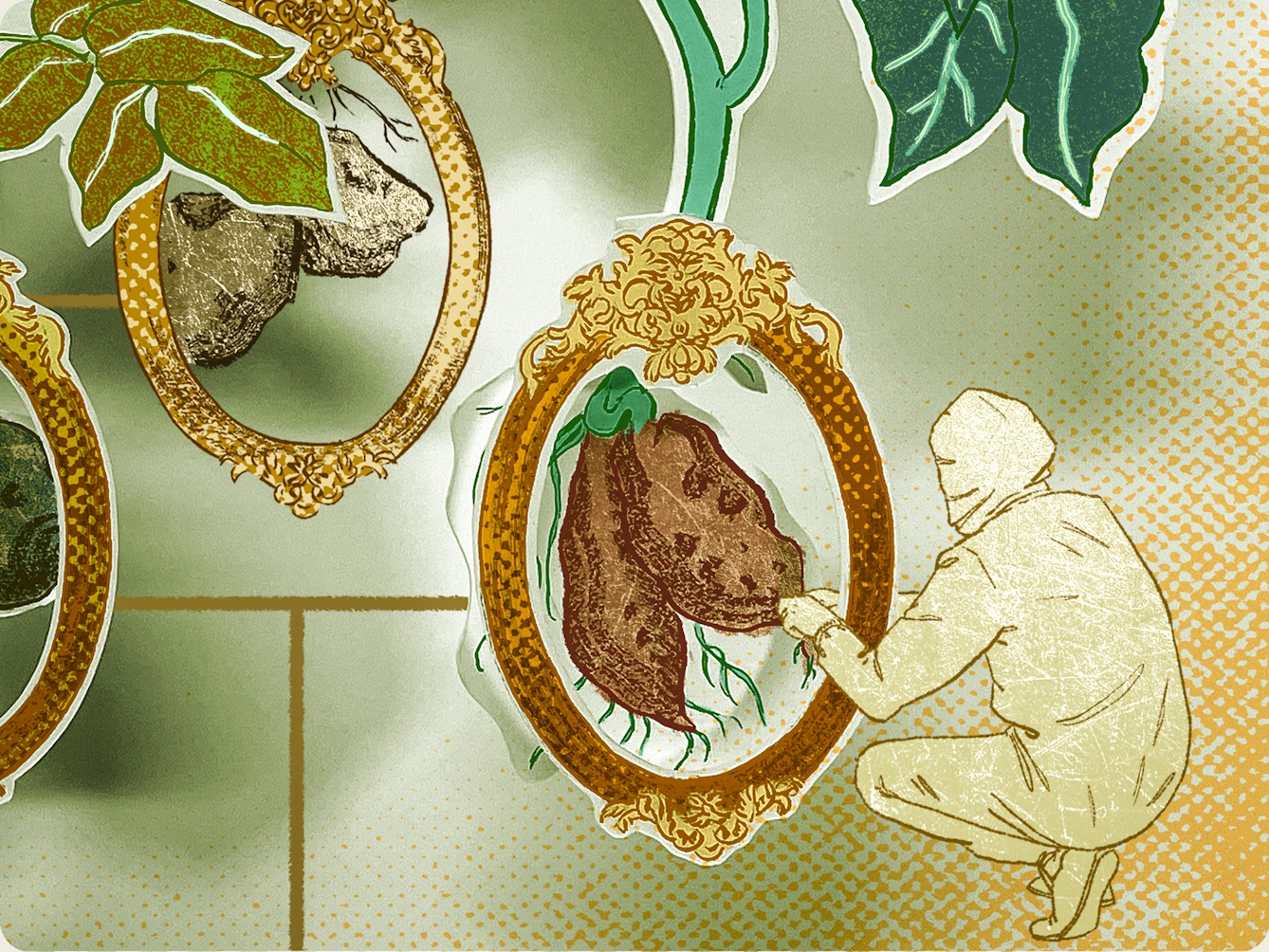
“I hope the genomic resources we generated will shed more light on how Cinchona native populations’ structures have changed… which will ultimately guide future conservation efforts.”
In this way, by analysing the genomes of unique museum collections, it’s possible to better understand historical events that have threatened humanity’s food security.
Working with these historical collections truly is detective work. It’s amazing to know that these samples had resisted the conditions they were transported in and the passing of time to be finally here with us, where we stand with state-of-the-art tools. I almost feel they’re patiently waiting for the ear that will hear the music they’re playing.
As I was grinding my historical Cinchona (the fever tree) bark samples, I convinced myself all my training and cultural background have led me to that point, where I can listen to their sounds and understand their stories and history.
So far, we can only speculate that due to historical overharvesting, habitat loss and difficulties spotting native individuals, Cinchona populations are losing their genetic diversity. For my work, I hope all the genomic resources we generated and the methodologies we developed will shed more light on how Cinchona native populations’ structures have changed historically. This will inform us about its current conservation status, which will ultimately guide future conservation efforts and policies.
Thus, the museum collections and archaeological remains can not only help us reveal historical events or evolutionary processes, but can also be part of the foundation for a more sustainable future.
This is particularly true as the new guidelines to prevent biodiversity loss and allow the recovery of natural ecosystems over the next 20 years are being drafted by the Convention of Biological Diversity (post-2020 Global Biodiversity Framework) with the ultimate goal to “live in harmony with nature by 2050”.
About the contributors
Nataly Allasi Canales
Dr Nataly Allasi Canales is a researcher and environmentalist at heart. Originally from the Peruvian Amazon, her aim is to unravel evolutionary histories of important organisms from her hometown, and by doing so she also aims to empower the local communities with science. She is a postdoctoral researcher at the University of Copenhagen.
Cat O’Neil
Cat O’Neil is an award-winning freelance illustrator, specialising in editorial. She studied at the Edinburgh College of Art, graduating in 2011, and has lived in Hong Kong, London, Glasgow, Lyon and Edinburgh. Her clients include the New York Times, Washington Post, WIRED, LA Times, Scientific American, the Financial Times, the Guardian/Observer, Libération and more. Her work explores the use of visual metaphors to convey concept and narrative, and combines the use of traditional and digital mediums. Much of her recent work includes the creation of 3D paper sculptures, which are made in her studio in Edinburgh.
